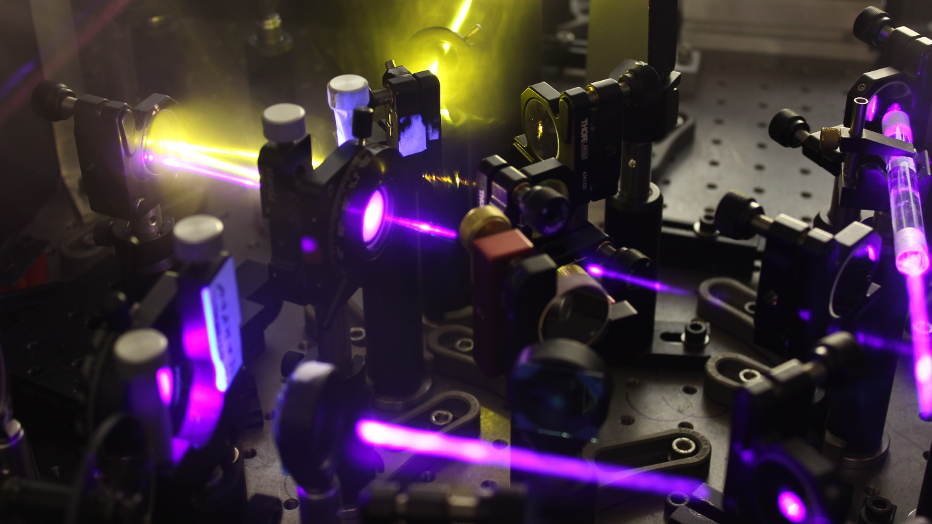Prof. Dr Felix Deschler’s research group at Heidelberg University’s Institute for Physical Chemistry produced a semiconductor that effectively creates light while also imparting a spin on that light. According to the researchers, the chiral perovskite material has significant technological potential and could be employed in optoelectronics, telecommunications, and information processing.

Setups for ultrafast laser spectroscopy of novel semiconductors. Image Credit: Heidelberg University
Materials science has long sought to produce brilliant, circularly polarized light. It is believed to be extremely difficult to accomplish both unique chirality (the rotation of light in a given direction) and high photoluminescence quantum efficiency (PLQE). The PLQE number reflects a material’s capacity to emit light. Inorganic semiconductors can produce high levels of brightness but often have low light polarization.
Organic molecular semiconductors, on the other hand, have high polarization, but their brightness is sometimes restricted by losses owing to dark conditions.
Until now, a material that truly combines the high luminescence quantum efficiency of inorganic semiconductors and the strong chirality of organic molecular systems has been lacking.
Dr. Felix Deschler, Full Professor, Physical Chemistry, Heidelberg University
The Heidelberg research team created a hybrid metal-halide perovskite semiconductor with a layered structure to achieve the requisite brightness and polarization. As a hybrid component, the scientists included a customized chiral organic molecule into the perovskite structure.
The use of a small aromatic molecule with a properly positioned halogen atom in the aromatic ring resulted in the formation of unique chiral perovskites with the structural identification R/S-3BrMBA2PbI4.
The ability to alter the structure so dramatically and yet still retain good material performance underscores the ability of perovskite materials to tolerate distortion in the crystal structure.
Shangpu Liu, Doctoral Student, Heidelberg University
Chiral 3BrMBA2PbI4 perovskites have a substantially higher degree of circularly polarized luminescence than other materials, even at room temperature, due to their severely deformed crystal structures. The researchers were able to decipher the mechanisms underlying the production of this unique light with the use of sophisticated ultra-fast laser spectroscopy studies.
The brightness and polarization values discovered are higher than those previously associated with chiral semiconductors.
Additionally, the researchers were able to demonstrate how the new materials are very promising for uses that rely on circularly polarized light. They used the components to create light detectors that can track and distinguish the chirality of the incident light. Additionally, the study team created light-emitting diodes, which use electricity to produce light.
The study was carried out as a part of Prof. Deschler’s ERC Starting Grant entitled Twisted Perovskites–Control of Spin and Chirality in Highly-luminescent Metal-halide Perovskites. Science Advances reported the findings.
Journal Reference
Li, Y., et al. (2023) Bright circularly polarized photoluminescence in chiral layered hybrid lead-halide perovskites. Science Advances. doi:10.1126/sciadv.adh5083.